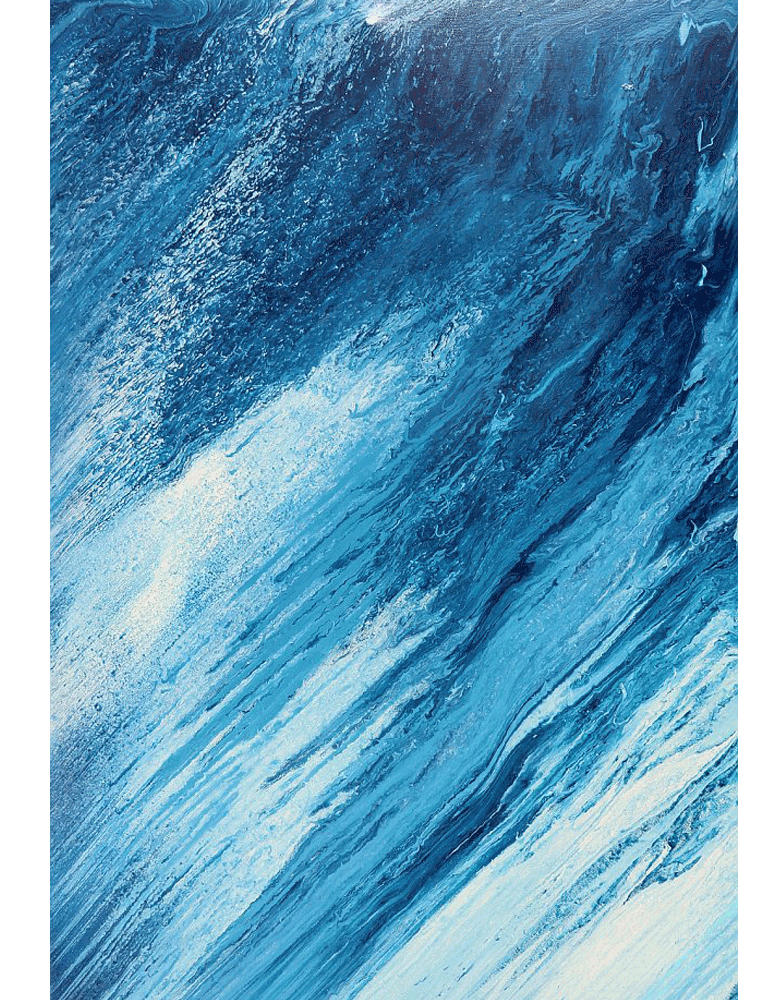
The Prayer of Waves

Title: The Prayer of Waves
Style: Abstract
Size: 90x60 cm
Medium: Canvas - Oil Paint
Description
The Prayer of Waves is a remarkable oiloncanvas painting by Iranian artist Abbas Ghadyani, created in a 90×60 cm format. This abstract masterpiece captures the essence of spirituality and motion through its dynamic composition of layered blues and fluid brushstrokes. As the title suggests, the work reflects the idea of waves in reverence, evoking a sense of sacred rhythm within nature. Each flowing line and textured surface resonates with the notion that the ocean itself is engaged in a silent prayer.
At first glance, the viewer is confronted with the majesty of deep and vibrant blues. As the eye moves across the surface, subtle variations in color and texture reveal an interplay between turbulence and calmness. The painting is not merely a representation of the sea—it is a metaphor for human emotions and the cyclical patterns of life, much like waves that rise, break, and return in endless repetition.
Technique and Methods
Ghadyani employs oil painting techniques that emphasize layering, blending, and movement. Through the use of free and expressive brushstrokes, the artist captures the fluidity of water in motion. The paint is applied in both thin, translucent washes and thick, textured layers, creating a visual contrast that brings the canvas to life.
The mastery of tonal gradation in blues—ranging from light, ethereal tones to deep, almost midnight shades—adds depth and dimension. White highlights and subtle grays serve to balance the composition, suggesting reflections of light on moving water.
This duality between transparency and opacity demonstrates Ghadyani’s ability to harness the potential of oil paint. Where the pigment is thin, it conveys delicacy and serenity; where it is dense, it suggests strength and permanence. Together, these qualities form a rhythm akin to the pulse of the sea itself.
Artistic Details and Composition
The composition of The Prayer of Waves is distinctly diagonal and dynamic, guiding the viewer’s gaze in an upward, flowing direction. This structure intensifies the sensation of endless movement, echoing the rise and fall of ocean waves.
Unlike traditional works that feature a fixed focal point, this painting distributes visual weight evenly across the canvas. The viewer’s eye is encouraged to travel continuously, much like a wave moving toward the shore.
Textural diversity is another defining feature. In some sections, the paint flows smoothly, resembling water in its purest form; in others, the texture is bold and vigorous, reflecting the raw energy of the sea. This juxtaposition mirrors the dual aspects of nature—gentleness and ferocity, silence and roar, stillness and motion.
Message and Meaning
The Prayer of Waves transcends the physical representation of the ocean. It speaks to the inner world of human emotions, where thoughts and feelings rise and fall in ceaseless cycles. By invoking the act of prayer in the title, Ghadyani reminds us that these movements are not random; they carry a spiritual dimension.
The work emphasizes the deep connection between humanity and nature. Just as humans seek transcendence through prayer and meditation, the ocean’s waves appear to engage in their own form of cosmic devotion.
Philosophically, the painting alludes to the cycle of life. Waves symbolize continuity, renewal, and impermanence—core elements of existence. The overwhelming use of blue enhances this interpretation, representing infinity, peace, and spiritual depth.
Conclusion
The Prayer of Waves stands as one of Abbas Ghadyani’s most compelling contributions to contemporary abstract art. Through the deliberate interplay of color, motion, and meaning, the painting creates not just an image, but an immersive experience.
By employing advanced oil painting techniques, Ghadyani captures the majesty of the ocean’s eternal rhythm. The waves are not silent—they whisper prayers of creation, echoing themes of balance, spirituality, and the enduring bond between humanity and nature.
Ultimately, this work demonstrates the artist’s profound ability to merge aesthetic mastery with philosophical insight, making The Prayer of Waves a canvas that both captivates the eye and nourishes the soul.
